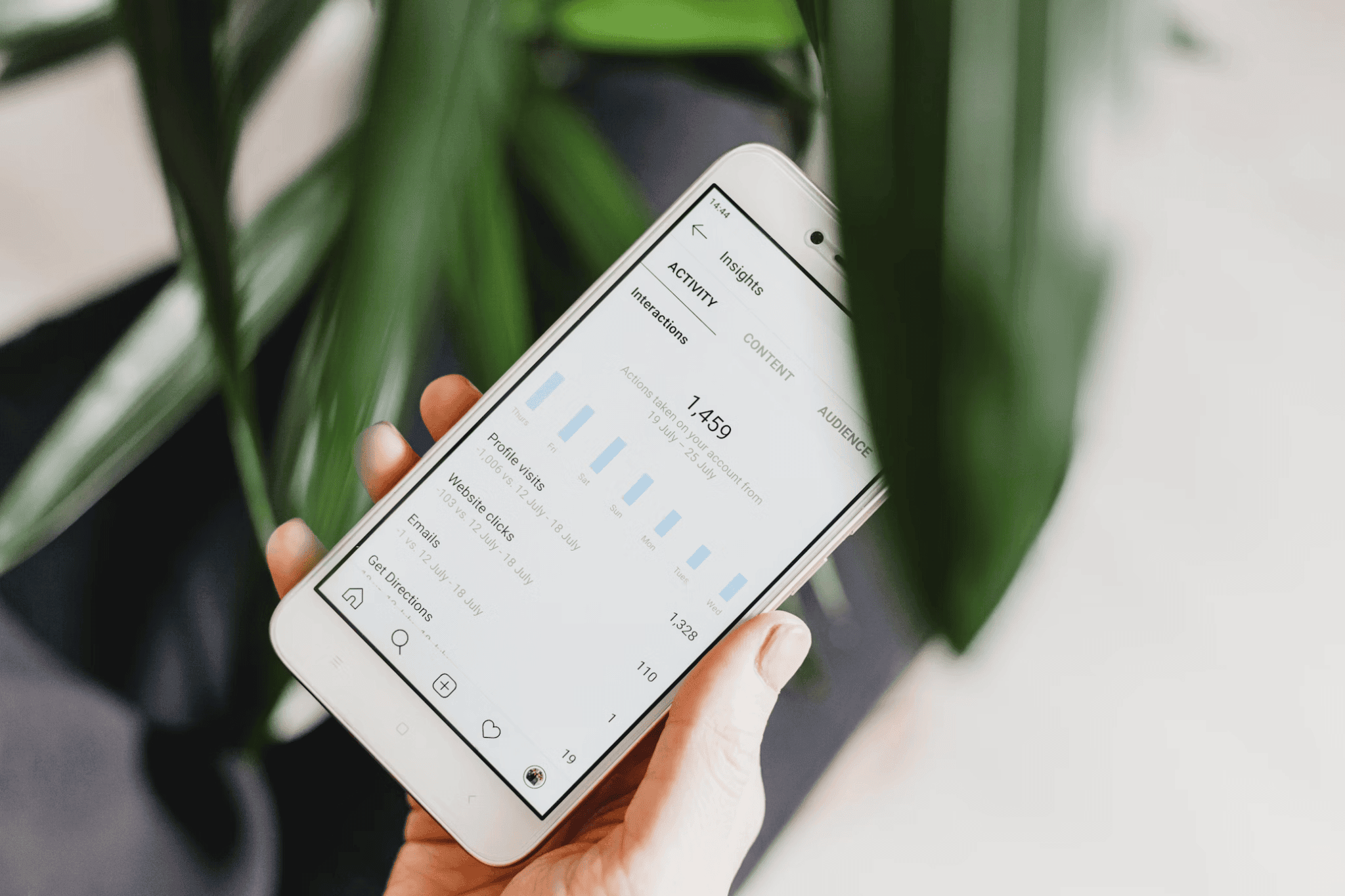Did you know that global spending on social media advertising is estimated to have reached over $207 billion in 2023? That shouldn’t be that surprising, given just how popular it is. After all, it offers brands a way to reach out to and engage with customers in a completely different way to traditional marketing.
Unfortunately, wherever there’s money to be made, the fraudsters are never far away. And social media click fraud is big business. In this article, we’ll explain what it is, how to identify whether it’s affecting your ad campaigns, and how to protect yourself against it.
What is social media click fraud?
Social media advertising is an immensely powerful tool for achieving reach, but it’s also vulnerable to an irritating little problem called click fraud. This term can mean two different things, depending on the situation.
First, it can mean artificial inflation of metrics such as likes and reposts for the sake of making a social media post or account look more popular than it is. This is usually done through the use of bots or hiring a click farm (a collection of workers paid to engage with particular content). Some businesses engage in this shady practice to try to amplify their presence online. Social media sites fight a continuous battle to try to clamp down on this to maintain the integrity of their platforms.

Free to use image from Unsplash
But in this article, we’re going to focus on the other type of click fraud, since that’s the one that tends to have the most direct impact on innocent parties. It’s also the only type you can do anything to guard against, since you don’t have any control over how other companies run their social media accounts.
The second type of click fraud specifically relates to paid advertising, either on social sites or on other digital ad networks like Google. It happens when someone clicks on a paid ad with no genuine intention of engaging with the brand it’s advertising.
Why is social media click fraud such a problem?
At first glance, this might seem to be a fairly trivial issue – but it can cause real problems for businesses. Here are a few reasons why.
Increased cost
Every time a user clicks on a paid ad, the business that placed the ad has to pay the social media site it’s hosted on. The charges are generally calculated on a cost-per-click basis, and the rates paid vary widely depending on a number of factors. These include but are not limited to:
- Demographics of the target audience
- Time period the ad appears (you’ll pay a premium for having your ads served on Black Friday, for instance)
- Competitiveness of keywords used in the ad
All told, this means you could be paying anywhere from as little as $0.10 a click to as much as $50 or even more.
Advertisers need to set limits on how much they spend on their social media marketing campaigns, for obvious reasons. To that end, it’s standard practice to decide upon a daily or lifetime budget. When the amount spent on clicks reaches that amount, the social media site stops serving the ad.
No company wants to pay for advertising that doesn’t work. But that’s exactly what can happen if you get enough fake clicks on one of your social media ads. You’ll hit your budget cap way before you should have, which means fewer genuine prospects will have clicked through your ad, costing you much more over time.

Free to use image from Unsplash
Reduced reach
A related implication is that your reach takes a hit. Since your ad is disappearing before it can be served to the number of potential customers you were expecting, the total audience for it will simply be smaller.
If this happens once or twice, it might not matter too much. But if your ads are subject to click fraud over a prolonged period, this can begin to have a material impact on your business. And if you’re not alert to the possibility of fraud, you might have a hard time figuring out what’s going on.
Skewed analytics
One of the most insidious effects of social media click fraud is that it messes with your analytics.
In the modern digital business environment, being able to leverage high-quality data sits at the core of everything from delivering excellent customer service to perfecting logistics. It’s why so many companies use an AI call center to improve interactions with customers, or inventory management software to optimize their stock processes. Data is king.
Usually, you can amass quite a bit of data from paid ad campaigns. That’s because the analytics reports will show you user segmentation data. That tells you who’s engaging with your ad, where they are, what demographic groups they fall into, and so on. But if most of the clicks are fake, all that paid social media analytics information will be completely irrelevant.

Free-to-use image sourced from Unsplash
Who commits click fraud and how?
Unfortunately, quite a lot of people commit click fraud. According to analysts CHEQ, around $37.5 billion in ad spend was wasted due to fraud in 2022. That’s across all platforms, not just social media sites – but you get the picture. Someone’s benefiting. But who?
There are a few culprits. Some fraudsters may use fake clicks on ads displayed on their own websites to get more money, for example. But on reputable social media sites, that’s not what’s going on. Usually, click fraud on big platforms such as Facebook and Instagram is all about malicious competitors trying to make your campaigns less effective.
When we entered the era of social media automation tools, few people were really preparing for this. Instead, we simply welcomed these technological advances for the speed and convenience they brought to implementing social campaigns.
But for every leap forward, there’s always someone ready to ride the wave in an underhanded manner to turn a quick buck. Here are some of the methods they use to do it.
Botnets
If you’re a regular user of social media, you’ll have encountered bots of various types. They’re pieces of software operated remotely by a command center, and they can be programmed to take a variety of actions.
In the case of click fraud, this means clicking repeatedly on ads to make it seem as if genuine users are interested. Serious operators can build botnets consisting of thousands of computers, all running the same software to commit fraud on a grand scale. Often, these computers don’t belong to them – instead, they’ve been compromised by malware. This makes it tricky to track the originator down.
Click farms
Click farms are less hi-tech but have the same objective as botnets – to make it straightforward to commit large-scale click fraud. They’re usually staffed by a small team of humans who spend their entire work shift just clicking on ads on multiple screens.
These operations are generally located in countries where the cost of labor is very low. In essence, they amount to digital sweatshops.

Free to use image from Unsplash
Location fraud
This is a tactic where the fraudsters change the location the clicks appear to be coming from to deflect suspicion. There’s plenty of technology out there that tracks clicks, so it’s not surprising this is a fairly common approach.
For instance, a good clickstream data example is when a company uses software to find out how different users navigate through their website. But you don’t even need anything quite as sophisticated as that to be able to spot immediately if your ad suddenly gets 50 clicks from the same IP address in the space of two minutes.
That means the scammers have to disguise what they’re doing. And the way they do it is simply to use a VPN to vary where their location appears to be.
How can you tell if click fraud is happening?
You might be wondering by now if it’s even possible to identify social media click fraud. Well, it’s not easy, but it is doable. It starts by keeping an eye out for unusual patterns. These are some of the signs that you may be a target:
High traffic/low conversions
If your ads have been getting unusually high traffic, but your conversion rates are dropping, that can be a giveaway there’s something suspicious going on. After all, that’s exactly the effect this kind of click fraud is intended to produce, so it’s not surprising when it starts happening. Of course, there might be other causes – maybe your landing page simply isn’t appealing – but if it’s happening consistently, even after you’ve made changes, and there’s no negative feedback coming in at the same time? It’s probably click fraud.
High bounce rates
Not all clicks that fail to convert are going to be fraudulent. There are several reasons why a genuine user might click on one of your ads and not convert. Maybe they clicked the ad by accident, or perhaps they thought your product might be what they’re looking for but quickly decide it doesn’t quite fit the bill.
But if your bounce rates are over about 70%, it’s a good idea to take a closer look at where all those clicks are coming from.
Suspicious spikes in clicks and impressions
A spike in impressions alone isn’t enough to suggest click fraud. In fact, it could just be the case that your ad campaign is going well! Indeed, a sudden increase in clicks is exactly what you’d expect to see in that case.
But there are some situations where sudden spikes could be a little suspicious. For example, maybe you’re seeing them at strange times when you wouldn’t expect most of your target audience to be awake. In that case, further investigation is definitely warranted.

Free to use image from Unsplash
Clicks coming from unusual locations
Remember how we explained that fraudsters will sometimes use a VPN to disguise where they’re operating from? Well, sometimes that can work against them. If you only target customers in specific countries, but you’re getting a lot of clicks from other regions of the world, that could suggest a VPN is involved.
Tips for preventing click fraud on social media
So, how do you go about preventing the fraudsters ruining your well-planned social media ad campaign? Luckily, there are a number of options.
Segment your data
The first line of defense is to segment your data as much as possible. That means not just by source but also by device type, location, time of day and so on. This allows you to find unusual patterns as quickly as possible, so you’ll be alerted to the possibility of fraud. Note that click farms tend to use mobile apps to commit click fraud, so segmenting by device type can be particularly useful here.
Monitor user behavior
This is something you should be doing anyway as a matter of course. Tools like computer telephony integration software and integrations from CRM software can help automate this. Not only can this data help you personalize your marketing, it can also help you spot fraud in cases where, say, you spot a suspiciously high number of clicks coming from the same IP address.
In addition, using project time tracking can help streamline internal workflows, ensuring resources are efficiently managed while external threats like click fraud are kept in check.
Excluding suspicious IP addresses
Of course, once you do successfully identify a suspicious IP address, you can simply block it. Social media sites are generally pretty happy to help you with this process, since they depend on the reliability of their ad programs as a core element of their business model.

Free to use image sourced from Unsplash
Use anti-click fraud prevention software
You can also find dedicated anti-click fraud software that will help you identify and block bad traffic sources. Many of these tools focus on the Google ad network, but there are also some that are designed to help detect fraud on social media sites as well.
Implement geo-targeting
Careful selection of the places you want your ads to be served in is a good way of limiting your exposure to click fraud. The added benefit of localizing your campaigns at a granular level is that you’ll also have more control over your campaigns in general.
Key takeaways for social media click fraud
Click fraud is a widespread problem online that can be tricky to detect. That said, it’s something that any brand running paid social media ads really must stay alert for, because if you do fall prey to it, it can have a seriously detrimental impact on your business.
Unscrupulous competitors operating botnets or using click farms to pepper your ads with fake clicks can undermine your campaigns. Fortunately, there are ways of fighting back.
The key is to dig into the data on a regular basis to try to spot unusual patterns. You can do this manually, by tracking metrics such as bounce rate, traffic volume, and conversion rate. Or if you prefer, you can deploy dedicated software to do the job for you. It doesn’t really matter which you choose as long as you’re aware of the importance of having some safeguards in place.
Ultimately, if you follow some of the suggestions we’ve laid out in this article, you’ll give your company the best chance of defeating the bots. Good luck!


